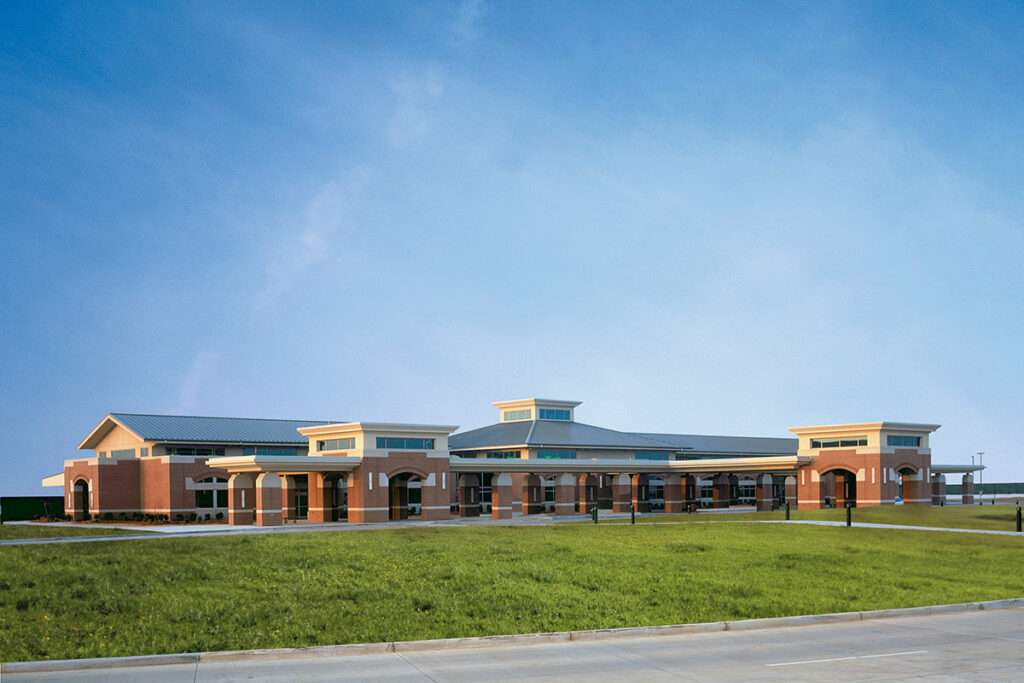The Fort Smith Regional Airport (FSM) boasts a rich history intertwined with the development of commercial aviation and the growth of Fort Smith, Arkansas.
Its journey began in the 1930s, a testament to local foresight and the transformative power of air travel.
Taking Flight: The Early Years (1930s-1940s)
The seeds of FSM were sown during the Great Depression.
Recognizing the potential of air travel, Fort Smith officials established a Municipal Airport Commission in 1936.
With bond money, they purchased 320 acres of land southeast of the city.
By 1939, the fledgling airport boasted two grass runways, each 3,500 feet long and 100 feet wide.
These humble beginnings marked a significant step towards connecting Fort Smith to the wider world.
The early 1940s saw crucial developments.
The first hangar was constructed in 1941, offering basic shelter for aircraft.
World War II, with its emphasis on aviation, further spurred progress.
In 1945, recognizing the limitations of grass runways, the airport transitioned to paved asphalt surfaces, making operations more reliable and efficient.
As the war ended, Fort Smith stood poised to embrace the burgeoning era of commercial air travel.
The Arrival of Commercial Aviation (1950s-1960s)
The 1950s witnessed a pivotal shift for FSM.
In 1951, the arrival of a control tower, manned by the Federal Aviation Administration (FAA), marked a significant leap in air traffic management.
This paved the way for the dawn of commercial air service.
1952 saw a historic event – Braniff International Airways inaugurated scheduled passenger flights at FSM.
This initial service offered daily round trips, connecting Fort Smith to major cities like Denver, Oklahoma City, Tulsa, and Memphis.
The arrival of commercial aviation signaled a new era of connectivity and economic opportunity for the region.
The decade witnessed further advancements.
The east-west runway was extended to 8,000 feet in 1958, accommodating larger aircraft.
This expansion, coupled with the growing popularity of air travel, necessitated a new passenger terminal.

In 1959, a dedicated terminal building replaced the earlier, more basic facilities.
This new terminal, later expanded in the 1970s, reflected the airport’s growing role as a regional hub.
The 1960s saw the arrival of jet service.
Braniff, a pioneer in this domain, introduced jet aircraft at FSM in 1965, further reducing travel times and enhancing connectivity.
Additionally, the decade saw the expansion of commercial service with the arrival of Frontier Airlines.
They offered nonstop flights to key destinations like Dallas-Fort Worth, Atlanta, and Little Rock.
This period marked the peak of commercial destinations served from Fort Smith, offering residents a wider range of travel options.
A Dual Role: Serving the Community and the Nation (1970s-Present)
The 1970s and beyond saw FSM solidify its position as a vital community asset.
The airport continued to cater to growing passenger traffic with expansions and renovations to the terminal.
However, its role extended beyond commercial aviation.
Since 1953, FSM has been home to the Fort Smith Air National Guard Station and the Arkansas Air National Guard’s 188th Wing.
This partnership between the airport and the military ensures the region’s air defense capabilities.
The presence of the National Guard further contributes to the local economy and adds a unique dimension to FSM’s operations.
The later decades witnessed a shift in the airline landscape.
Deregulation in the 1980s led to consolidation among airlines, impacting the number of destinations served from FSM.
However, the airport adapted, focusing on attracting new carriers and maintaining connections to key business and leisure hubs.
Today, FSM, Arkansas offers scheduled commercial service to major destinations like Atlanta and Dallas-Fort Worth.
Additionally, a full-service fixed-based operator (FBO) caters to general aviation, business jets, and military aircraft.
The airport continues to play a crucial role in economic development by facilitating the movement of people and goods.
Looking ahead, FSM is committed to modernization and expansion.
Plans include upgrades to infrastructure, passenger amenities, and cargo handling facilities.
This focus on continuous improvement ensures that FSM remains the “Airport of Choice” for the region, fostering connectivity and economic growth well into the future.
In conclusion, the Fort Smith Regional Airport’s history is a testament to vision, adaptation, and progress in Arkansas.
From its humble beginnings as a municipal airport to its current status as a regional hub, FSM has played a vital role in connecting Fort Smith to the wider world.

Click the banner to subscribe to our weekly newsleter.

Click the photo to join our WhatsApp channel so then you can stay up to date with everything going on in the aviation industry!









